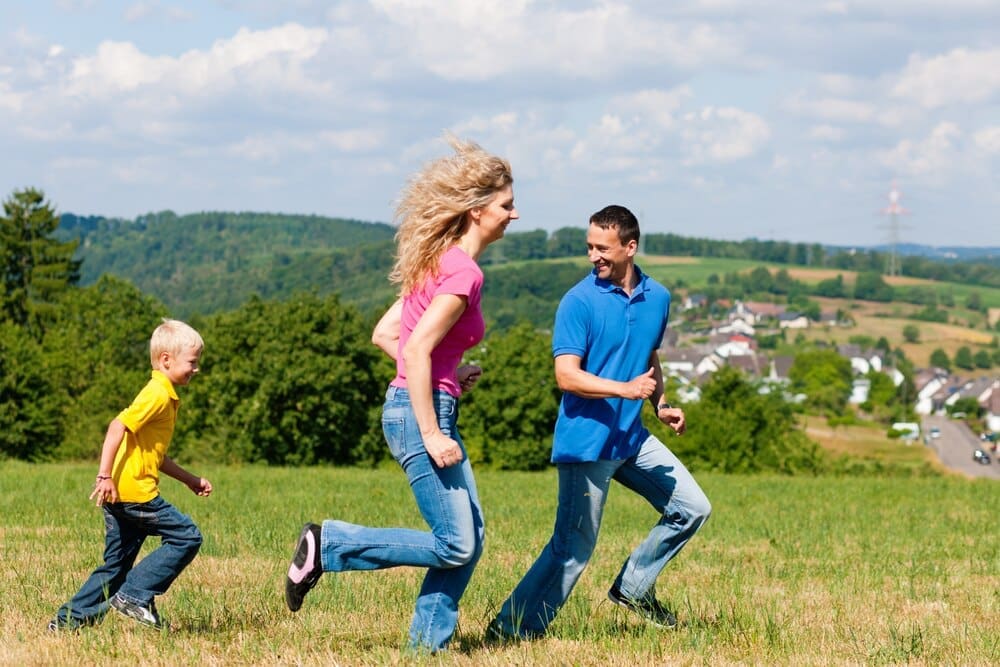In a world of competing schedules and digital distractions, finding quality time to connect as a family can be a challenge, yet its importance for physical and emotional well-being has never been greater. For families of all ages and sizes, engaging in fun, shared physical activities offers a powerful solution, providing a dedicated time to move together, strengthen bonds, and build lifelong healthy habits. Whether it’s a simple game of tag in the backyard, a planned hike on a local trail, or a spontaneous living room dance party, the key is to prioritize consistent, enjoyable movement that fosters connection and creates lasting memories far more valuable than any screen time.
The Compelling “Why” Behind Family Fitness
The benefits of regular physical activity are well-documented, but they become amplified when experienced as a family unit. It’s about more than just burning calories; it’s about building a foundation of wellness that supports every member in multiple facets of life.
From a physiological standpoint, consistent activity helps children and adults alike maintain a healthy weight, build strong bones and muscles, and improve cardiovascular health. This significantly reduces the risk of chronic diseases later in life, such as heart disease and type 2 diabetes. For children, in particular, regular movement is critical for developing motor skills, coordination, and balance.
The mental and emotional rewards are just as profound. Exercise is a natural mood booster, triggering the release of endorphins that can alleviate stress and anxiety. When a family exercises together, they create a shared positive experience, providing a healthy outlet for releasing the pressures of school and work. This collaborative effort can improve communication, teach cooperation, and build resilience in children.
Perhaps most importantly, making fitness a family affair normalizes an active lifestyle. When children see their parents prioritizing movement and enjoying it, they are far more likely to adopt these values themselves. You are not just going for a bike ride; you are modeling a blueprint for a long, healthy, and connected life.
Getting Started: Simple Tips for Success
The idea of adding one more thing to the family calendar can feel daunting. However, with a bit of planning and a focus on fun, integrating physical activity can become a seamless and anticipated part of your routine.
Make It a Routine
Consistency is key. Schedule your family activity time just as you would any other important appointment. It could be a 30-minute walk after dinner three times a week, a dedicated “Adventure Saturday” morning, or a Sunday afternoon bike ride. When it’s on the calendar, it’s much more likely to happen.
Let Everyone Have a Say
To ensure enthusiasm and participation, involve the whole family in the planning process. Create a “fun jar” where everyone can write down activity ideas. Each week, a different family member can pull an idea from the jar. This gives children a sense of ownership and gets them excited about what’s to come.
Focus on Fun, Not Performance
The primary goal is to move and connect. Avoid putting too much pressure on performance, speed, or skill, which can discourage less athletic family members. The objective is shared participation and enjoyment. A little friendly competition can be fun, but always ensure it ends in high-fives and laughter, not frustration.
Be Prepared for Anything
Nothing can derail an outing faster than being unprepared. Before heading out, pack a small bag with essentials: water bottles for everyone, healthy snacks like fruit or granola bars, a basic first-aid kit, sunscreen, and any necessary gear. Being ready for minor bumps or hunger pangs keeps the mood positive and the fun on track.
Activities for Every Season and Setting
The best family activity is one that you will actually do. The options are nearly limitless and can be adapted to your family’s interests, budget, and local environment. Here are some ideas to get you started, categorized for easy planning.
Backyard and Neighborhood Adventures
You don’t need to travel far to get active. Your own home and neighborhood are filled with opportunities for fun.
DIY Obstacle Course: This is a classic for a reason. Use pillows, cardboard boxes, chairs to crawl under, hula hoops to jump through, and a line of tape on the ground to balance on. Time each other and see who can set the family record. It’s a fantastic way to develop agility, balance, and strength.
Neighborhood Scavenger Hunt: Create a list of items for your family to find on a walk. This can include things like “a red door,” “a bird’s nest,” “a dog being walked,” or “a house with a wind chime.” It transforms a simple walk into an engaging game of observation.
Family Sports Night: Dedicate one evening a week to a sport. Whether it’s a game of soccer in the yard, shooting hoops in the driveway, or playing catch with a frisbee or football at a local park, it’s a great way to burn off energy and practice teamwork.
Exploring the Great Outdoors
Connecting with nature provides an extra layer of mental health benefits, reducing stress and improving focus.
Hiking and Nature Walks: Choose trails that are appropriate for the age and ability of your youngest child. Let kids take the lead with a map, point out interesting plants or animals, and pack a special treat to enjoy at a scenic viewpoint. The goal is the journey, not just the destination.
Family Bike Rides: Explore local bike paths and greenways. For younger children who aren’t ready for long distances, consider bike trailers or tag-along attachments. Always make helmets a non-negotiable rule for everyone.
Geocaching: Think of it as a high-tech, global treasure hunt. Using a GPS-enabled app on your phone, you navigate to specific coordinates to find hidden containers, or “geocaches.” It’s a brilliant way to motivate kids to walk longer distances and adds an element of mystery and reward to any outing.
Water Activities: If you live near a lake, river, or ocean, the possibilities are endless. Renting a canoe, kayaks, or a paddleboat for an hour can be a wonderful team-building exercise. Even a simple day at the beach spent swimming, building sandcastles, and chasing waves is incredibly active.
Rainy Day and Indoor Fun
Don’t let bad weather derail your plans. There are plenty of ways to stay active indoors.
Living Room Dance Party: Create a collaborative playlist with songs from every family member. Turn down the lights, turn up the music, and just let loose. It’s a guaranteed mood-lifter and a fantastic cardio workout.
Active Video Games: While screen time is often seen as sedentary, many modern gaming systems have active options. Games that involve dancing, virtual sports like tennis or bowling, or adventure challenges can get everyone’s heart rate up while still feeling like play.
Indoor Rock Climbing or Bouldering: Many towns now have indoor climbing gyms that are very family-friendly. It’s a full-body workout that challenges your strength, flexibility, and problem-solving skills in a safe, supervised environment.
Trampoline Parks: For a high-energy outing, a trampoline park is hard to beat. It’s an hour of pure, joyful bouncing that will leave everyone happily exhausted.
Giving Back While Getting Active
Combine physical activity with civic engagement to teach valuable lessons about community and empathy.
Charity Walks and Fun Runs: Sign up as a family for a local 5K walk or fun run that benefits a cause you care about. The shared goal of training for and completing the event together can be an incredibly powerful bonding experience.
Community Clean-Up: Arm yourselves with gloves and trash bags and spend an hour cleaning up a local park, beach, or trail. All the bending, lifting, and walking adds up to a solid workout, and you’ll leave the space better than you found it.
The Ultimate Goal: Connection Through Movement
Ultimately, the specific activity you choose is less important than the commitment to doing it together. The laughter during a game of tag, the shared sense of accomplishment at the top of a hiking trail, and the quiet conversations on a long walk are the true rewards. By weaving physical activity into the fabric of your family life, you are doing more than just promoting health; you are building a legacy of connection, resilience, and joy that will support your children long after they’ve grown.














